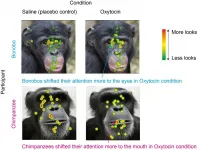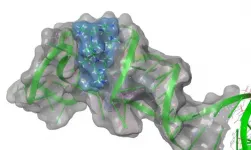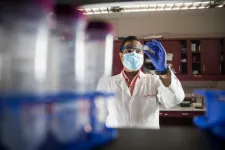UK modelling study estimates 59% of SARS-CoV-2 transmission may be prevented by completing the WHO recommended 14-day quarantine period after exposure to a confirmed COVID-19 case Model assumes that quarantine adherence levels are moderate, with 67% of people completing the recommended 14-day isolation period after testing positive for COVID-19 and 50% of contacts of confirmed cases completing 14 days of quarantine. A similar proportion of transmission could be prevented with only 7 days of quarantine (assuming the same level of adherence) if a COVID-19 test is performed on the seventh day of quarantine and people who receive a negative result are released, the model predicts. They also estimate that the use of daily rapid lateral flow tests for traced contacts for 5 days could potentially replace the requirement to quarantine, if all tests are negative. More research will be needed before such a strategy could be used in the UK population, and this study does not evaluate cost or number of tests required. Researchers recommend people continue to follow official guidance on quarantine and self-isolation. Researchers say this approach could improve adherence to quarantine rules and reduce the financial and social impact on those affected, while maintaining control of the virus at least as well if not better than the recommended 14-day strategy. Quarantine time after contact with a confirmed COVID-19 case could potentially be reduced to 7 days without raising the risk of onward transmission of the virus by testing people on the seventh day of quarantine with either a PCR or lateral flow antigen (LFA) test, findings from an English modelling study published today in The Lancet Public Health journal suggest.
The study, which accounts for infected people's potential viral load and the sensitivity of COVID-19 tests, estimates that people who test negative after 7 days of quarantine are unlikely to be infectious and could potentially be released without raising the risk of onward virus transmission above what would be expected by quarantining for 14 days without testing.
Daily testing for 5 days after exposure to COVID-19 using rapid lateral flow kits could potentially avert a similar level (50%) of onward virus transmission as the 14-day approach without the need to quarantine at all, if individuals isolate when receiving a positive test, the model predicts.
The study does not evaluate the number or cost of tests that would be required for this approach, however. The authors stress that people should continue to observe the official guidance on quarantine and self-isolation, which the UK government has set at 10 days, until their findings can be verified with further research.
Assistant Professor Sam Clifford, joint-lead author and member of the CMMID COVID-19 Working Group at the London School of Hygiene & Tropical Medicine, says: "Adherence to quarantine rules is key for reducing onward COVID-19 transmission. Our findings suggest that incorporating testing of contacts into a trace-isolate system could potentially help to reduce quarantine times, and this in turn may improve adherence by making it easier to complete the full isolation period. Our study did not evaluate costs, however, and further studies are needed to address this, as well as to further verify our findings. A large component of the effect of any strategy we modelled was that of strict isolation upon the onset of COVID symptoms, which should be followed at any point after exposure, including after the end of the specified quarantine period or after negative test results. We recommend people continue to follow the official guidance on quarantine and self-isolation, which will give us the best chance of bringing this virus under control while vaccination continues." [1]
Assistant Professor Elizabeth Fearon, a collaborator within the CMMID COVID-19 Working Group at the London School of Hygiene & Tropical Medicine, adds: "This study highlights the importance of facilitating adherence to quarantine and self-isolation in the effectiveness of contact tracing. Testing on its own will have no impact on transmission if cases are not financially enabled and socially supported to self-isolate after a positive test." [1]
Around 95% of people who develop symptoms of COVID-19 will show signs of disease within 14 days of exposure to the virus. The World Health Organisation therefore recommends that people who have been in contact with someone who has tested positive for COVID-19 should quarantine for a full 14 days after their last day of contact [2]. This approach helps to prevent further onward spread of the virus because anyone who may have been infected after contact with the initial case will already be separated from others before they develop symptoms or start shedding virus. However, adherence to quarantine rules varies and there is increasing global evidence that many people cannot afford to take the required time away from work or caring responsibilities when they may not be infected at all. Some countries have reduced their official guidelines on quarantine and self-isolation to 7 days to try and improve compliance, including France and Belgium [3].
Testing could help to identify people who are not infected so they can be released from quarantine early. PCR tests offer the most sensitive method of detecting COVID-19 infection, and also result in few false positives. These tests work by amplifying and detecting virus genetic material and are highly sensitive, meaning they can detect even low levels of virus RNA. However, samples have to be sent to a laboratory for processing and, in the UK, it currently takes around 2 days to return a result. Additionally, the high sensitivity of PCR means it can detect very low viral loads in people who are unlikely to be infectious, as well as trace viral particles for weeks after a person has ceased to be infectious [4].
Rapid lateral flow tests work by detecting surface molecules of the SARS-CoV-2 virus. These tests can deliver a result within 15 to 30 minutes and are substantially cheaper. However, this approach is less sensitive than PCR and relatively high levels of virus need to be present in the person to return a positive result. Initial studies to evaluate the performance of LFA tests found that 76.8% of positive COVID-19 cases were detected and that LFA tests have a 95% chance of detecting cases with high viral loads, who are likely to be most infectious [5]. More recent analysis (based on real-world trials of mass testing in Liverpool, UK) suggests LFA tests detect less than half (48.89%) of COVID-19 cases [6] when compared to PCR. As PCR tests also detect people with very low viral loads who are unlikely to be infectious, comparing LFA tests to PCR tests in this way may underestimate their effectiveness at detecting people who are likely to be infectious, but further research is needed.
In the new study, researchers used mathematical modelling to estimate the effect of different quarantine and testing strategies on reducing onward transmission from traced secondary infections. Using data from Public Health England and NHS England, the team simulated the levels of virus an infected person would be likely to produce at each stage of infection, alongside timing of symptom onset, test sensitivity and tracing and testing timings.
The researchers acknowledge that adherence to quarantine guidance is not perfect in the real world. Their model assumes around two thirds (67%) of people will complete the full 14 days of self-isolation after testing positive or developing symptoms of COVID-19, and that half of people who come into contact with a confirmed case complete the recommended 14-day quarantine period after exposure. It also assumes that there is a delay of three days from a person taking a COVID-19 test until their contacts are traced and instructed to quarantine, based on the latest National Health Service test and trace data.
Based on those assumptions, completing the full 14-day recommended quarantine period for contacts of COVID-19 cases is estimated to prevent 59% of onward virus transmission. A similar proportion of onward transmission could potentially be prevented with only 7 days of quarantine if a PCR or LFA test is performed on the final day of quarantine and people who receive a negative result are released (PCR, 54%; LFA, 50%).
The study estimates that the quarantine period could be replaced if traced contacts are required to take a daily LFA test for five days and those who do not receive any positive results are released, with 50% of onward virus transmission predicted to be prevented. Reducing delays, such as in the tracing and notification of contacts, is integral to getting people to quarantine as quickly as possible, the authors say.
Boosting rates of adherence to quarantine and self-isolation would bring substantial increases in the levels of virus transmission that could be prevented. The model predicts that if people adhere perfectly to self-isolation for the recommended 14 days after a positive test and their close contacts are required to take a daily LFA test for 5 days before release on the final day if all tests are negative, 80% of onward virus transmission could potentially be averted.
Notably, the model is based on the assumption that the LFA test works at the higher level of sensitivity, detecting on average 76.8% of cases that tested positive in a PCR test [5]. When the team based their analysis of the LFA test based on the lower figure from the Liverpool trial 48.89%, they found comparable but slightly lower results for the benefit of using these kits to reduce quarantine times [6]. In this analysis, taking an LFA test on day 7 of quarantine would prevent 44% of onward virus transmission, while daily LFA testing for 5 days would prevent 43% of transmission (see appendix).
Billy Quilty, joint-lead author and research assistant in the CMMID COVID-19 Working Group at the London School of Hygiene & Tropical Medicine, says: "Our findings suggest that introducing testing of contacts in contact tracing may allow for a large reduction in the duration of quarantine. Daily rapid tests for at least 5 days may allow for the quarantine requirement to be removed entirely, with self-isolation required only upon the onset of symptoms or a positive rapid test result. This strategy may allow for critical essential workers to continue working if exposed but not infected. However, our findings must be confirmed by studies in real-world conditions before they can be adopted as policy. Crucially, any changes in behaviour following either a positive or negative test which may increase or decrease transmission risk should be closely monitored to ensure that the costs of such a strategy do not outweigh the potential benefits." [1]
The authors note that their study does not consider other aspects of the test and trace system that might affect virus transmission. These include the number of people with COVID-19 who do not engage with the system at all, variation in the number of secondary cases generated by each infected person, and the proportion of secondary cases that are missed by tracers for example if they are unable to find contact details or the person has moved.
INFORMATION:
NOTES TO EDITORS
The study was carried out by researchers from the London School of Hygiene & Tropical Medicine, UK. It was funded by the National Institute for Health Research, UK Research and Innovation, Wellcome Trust and the Horizon 2021 programme from the European Union.
The labels have been added to this press release as part of a project run by the Academy of Medical Sciences seeking to improve the communication of evidence. For more information, please see: http://www.sciencemediacentre.org/wp-content/uploads/2018/01/AMS-press-release-labelling-system-GUIDANCE.pdf if you have any questions or feedback, please contact The Lancet press office pressoffice@lancet.com
[1] Quote direct from the author and cannot be found in the text of the article.
[2] Considerations for quarantine of individuals in the context of containment for coronavirus disease (COVID-19). World Health Organisation, 19 August 2020 (accessed 14 January 2021).
https://www.who.int/publications/i/item/considerations-for-quarantine-of-individuals-in-the-context-of-containment-for-coronavirus-disease-(covid-19)
[3] L. Atlani-Duault et al. COVID-19: France grapples with the pragmatics of isolation. The Lancet Public Health, 09 October 2020.
https://www.thelancet.com/journals/lanpub/article/PIIS2468-2667(20)30235-8/fulltext
[4] J.J.A. van Kampen et al. Duration and key determinants of infectious virus shedding in hospitalized patients with coronavirus disease-2019 (COVID-19). Nature Communications, 2021. https://doi.org/10.1038/s41467-020-20568-4
[5] Oxford University and PHE confirm high-sensitivity of Lateral Flow Tests following extensive clinical evaluation. University of Oxford, 11 Nov 2020 (accessed 14 January 2021).
https://www.ox.ac.uk/news/2020-11-11-oxford-university-and-phe-confirm-lateral-flow-tests-show-high-specificity-and-are
[6] Innova Lateral Flow SARS-CoV-2 Antigen test accuracy in Liverpool Pilot: preliminary data. UK Government., 26 November 2020 (accessed 14 January 2021).
https://www.gov.uk/government/publications/innova-lateral-flow-sars-cov-2-antigen-test-accuracy-in-liverpool-pilot-preliminary-data-26-november-2020





